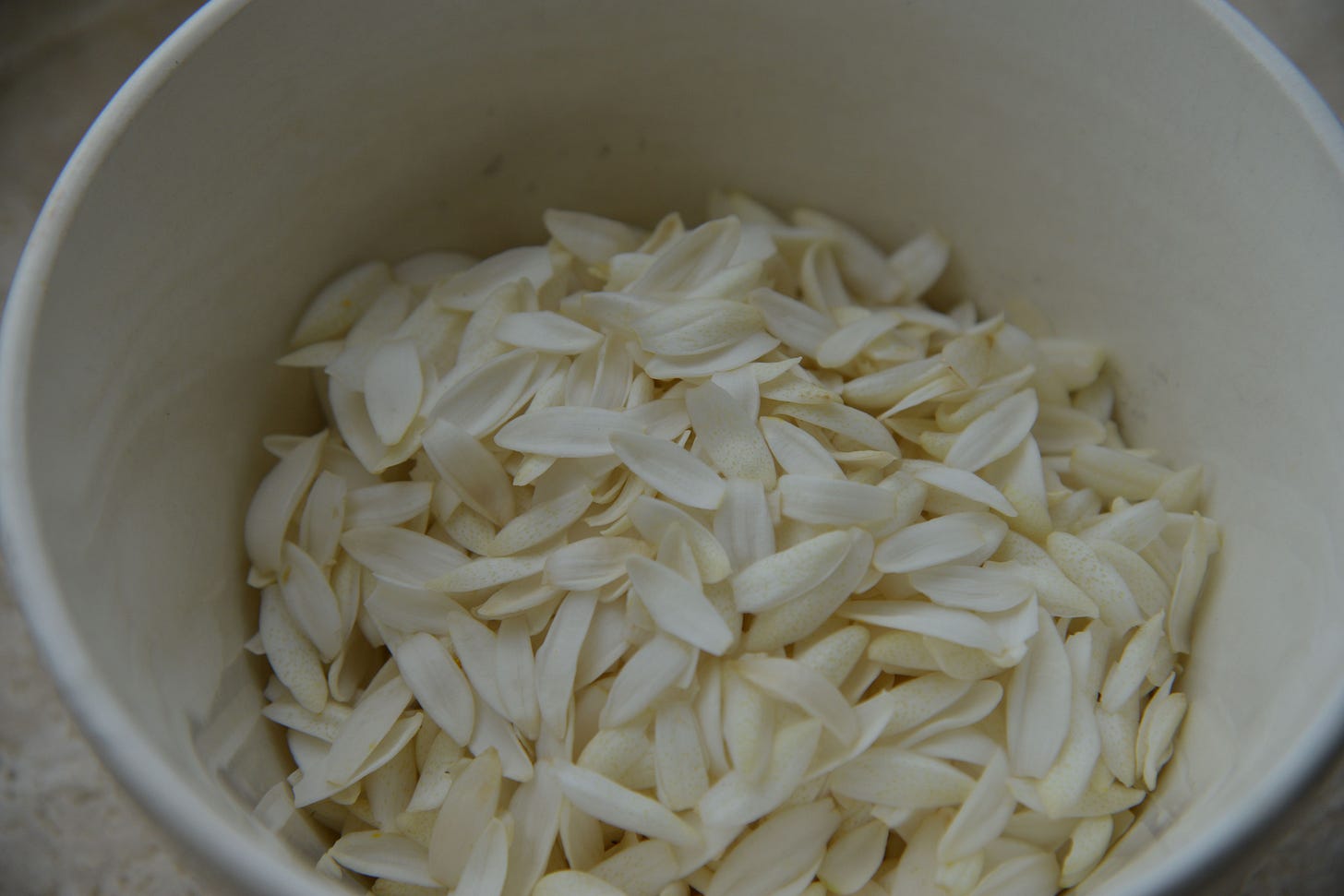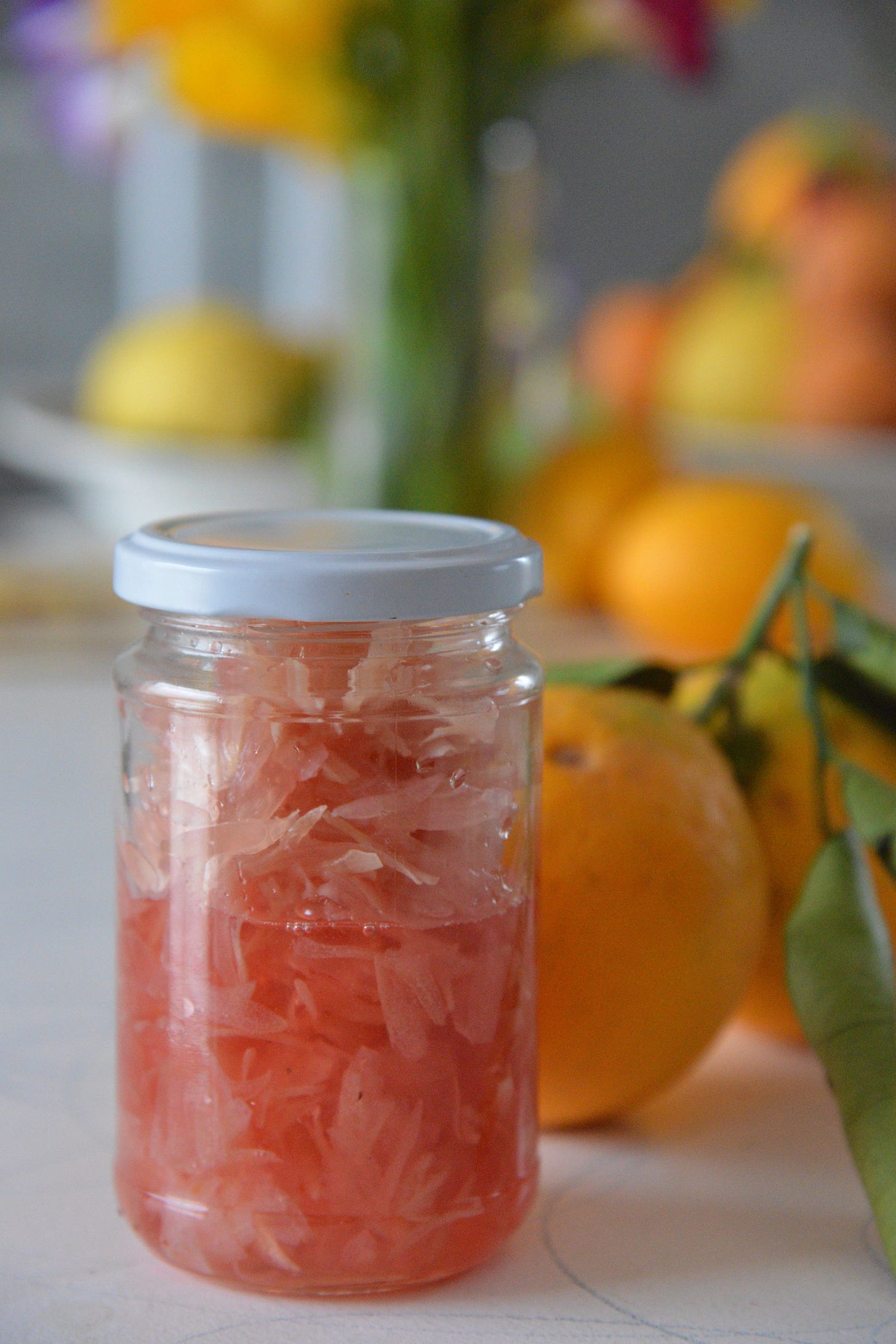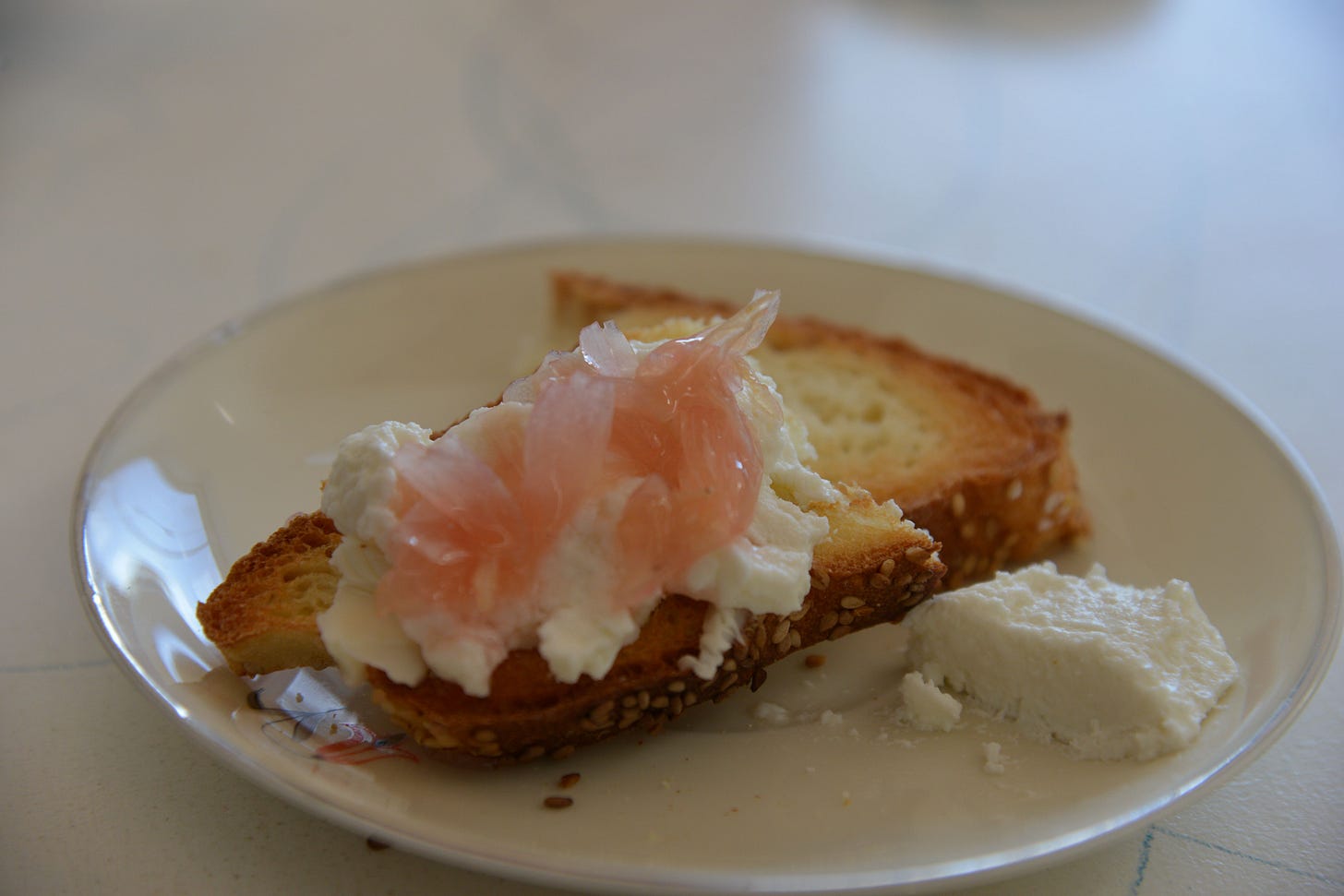The first time I met Amy was sometime in the late 1990s. I had been taking short cooking courses at the Culinary Institute of America in St Helena and had made friends with Catherine Brendel, a wonderful chef instructor there (ex Chez Panisse) who invited me to stay with her. Amy was renting a room at Catherine’s and I immediately made friends with her the way I had with Catherine - Amy was then a chef at Chez Panisse.
Sadly, Catherine died soon after we met and I lost touch with Amy after she moved out of Catherine’s place but we reconnected a few years later when on another of my visits to the Bay Area I had a chance encounter with a friend of hers who gave me her contact number. We resumed our friendship as if we had always been in touch, and sometime later, when I started my new life in Sicily by renting Mary Taylor Simeti’s casetta on her farm, I invited Amy to come and stay.
In those days, Mary still grew vegetables on the farm and every morning, Amy would go up to Mary’s vegetable garden to pick broad beans, artichokes and whatever else was growing; and every day she would cook the most exquisite, simple dinner with whatever she had harvested. It was utterly delightful to have a great chef like Amy cook for me on a daily basis, not to mention that she was also the most perfect guest.
And because it was springtime, there was also a profusion of orange blossom on Mary’s citrus trees. So I decided we would try to make orange blossom jam, which in Lebanon is used to garnish sweets, mostly those with 2ashta (clotted cream). The following morning, we set off to Mary’s orange grove and picked a basketful of the most beautiful blossom which we then took back to the casetta to start the laborious, and long process of making the jam.
I had a recipe from Ibrahim Mouzannar’s cookbook (one of my favourites on Lebanese cuisine), which detailed the process for making the jam over 3 days! The first step was to delicately pick off the petals one by one and discard the stem and central bit with the pollen.
This took forever - I am not sure how Lebanese sweets makers manage to sell the jam so reasonably given the amount of labour and time involved, unless that is they have a fast track secret which I am not aware of. Anyhow, we ended up with enough petals to make about three jars. We then had to soak the petals, boil them, cook them in syrup then cook them again before finally adding the food colouring.
In Lebanon, the colour of the jam is bright red which I am sure is due to an artificial food colouring rather than a natural one. We wanted a more subtle colour for our jam and used a hibiscus based food colour. The result was gorgeous as you can see from the pictures below. I will eventually include a recipe in my new book which is not out until 2025. Hopefully, Amy will test it and all the other recipes like she did for my previous two books. There is a recipe on my blog from when I posted about our orange blossom jam adventure but the one I will refine the recipe I will include in my latest book and will make sure to simplify it and make it less time consuming!










Beautiful post Anissa, albeit with a note of sadness. So glad you're writing another book!
Oh the perfumed air.